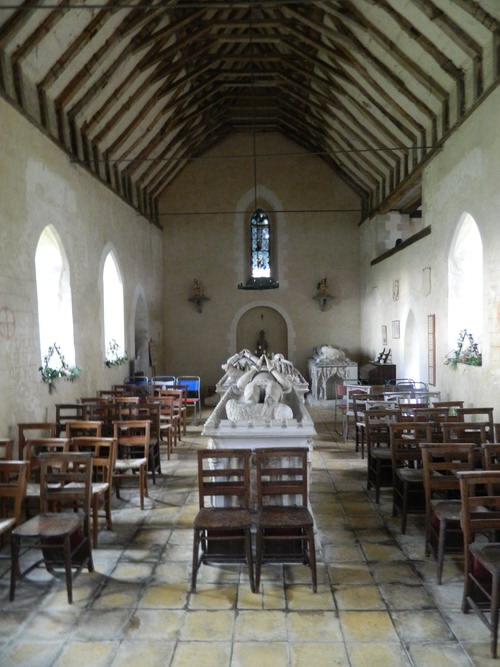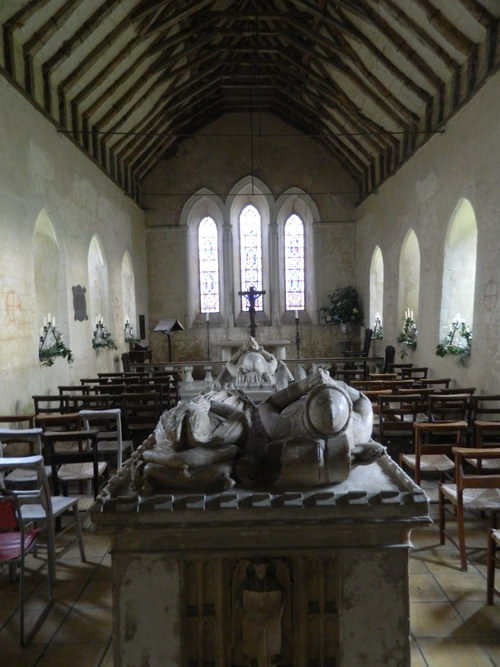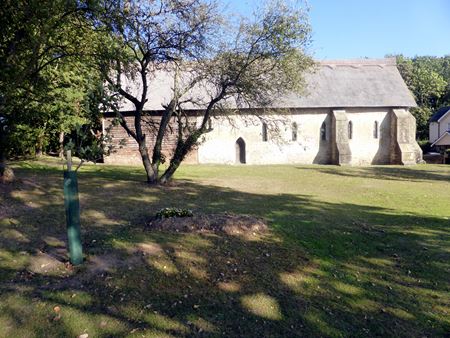|
Location:-Ordnance
Survey map reference TL917345
Walks: 1.5 miles from village
Conditions: Road and farm track
access
Access: This
site is suitable for wheelchair access.
The Chapel is normally open during the daytime for free access.
Please visit first before contacting the keyholders, who are listed below.
Don't forget the people have a full time job and should only be disturbed
as a last resort.
(Do not contact the web site for access details)
Managed by:- Geoffrey Probert. Great
Bevills, Bures
How to get there:-
By Road: Take the Assington Rd (Cuckoo
Hill) out of Bures. At the top of Cuckoo Hill enter Fysh House Farm. Continue
through farm keeping to concrete road, past "Treesave" renovation
works (right side) and follow gravel drive. At the bottom of drive turn
right for the Chapel.
Sat Nav:
CO8 5LD
Car Park: Please park your vehicle to the
left of the buildings, as you enter the farm drive. The area is signposted.
Then walk down the gravel
drive to the Chapel, takes about 5 minutes.
Parking on the grass surrounding the Chapel is not encouraged.
If the Chapel is locked
(a) Try the house opposite
(b) Call the owner Geoffrey Probert for advice
01787 227237
|
This is a Private
Chapel and is secured out
of normal office hours.
There are no
valuables or artifacts stored within the premises.
|
On Christmas Day 855, history
tells us, Bishop Humbert of Elmham anointed a 14-year-old boy as King
of the East Angles. The boy was Edmund, the chosen heir of King Offa,
and his Coronation was documented at `Burva`.
The chronicler Galfridus de
Fontibus also described the coronation as having taken place at "Bures",
which is an ancient royal hill.
It is the general belief that this was the
lonely hilltop, where St Stephen's Chapel now stands.
Unfortunately Edmund didn`t
survive long, the invading Danes captured Edmund and held a mock trial,
reviled, stripped and scourged him because he would not renounce the Christian
Faith. He only opened his lips once and that was to confess to Christ.
At the end of the November day, the Danes led him out of the village of
Hoxne bound him to an oak at the edge of the forest and then in a most
calculated cruel way made him a target for their arrows, deliberately
avoiding any vital parts.
The Danish Chief gave him one last chance to renounce his Faith but he
refused. The Danes decapitated him without mercy. Poor Bishop Humbert
who had carried out the Coronation followed the same terrible fate within
minutes.
When the Danes left the
area, the local Christian men recovered his body and laid it to rest in
a local wooden Chapel
In 903, the Danish Christian King Canute transferred his body to Bury,
which in time became the site of the Abbey we see today.
Thus martyred, it was natural that Edmund should be canonised: his shrine
at the place which was to became known as Bury St Edmunds. It became a
very popular site of pilgrimage, enabling the abbey there to thrive. but
where was his royal seat, his place of coronation, Burva?
There is good reason to
believe that the Manor House for which the Chapel was once built, stood
on the summit of Cuckoo Hill now occupied by a small grove of trees. For
all houses that were of any importance, were fortified usually by a pallisade
of wood with a commanding view of the open countryside.
(ref WGCP)
It contains the effigies of three Earls
of Oxford, the only survivors of twenty-one tombs once found at Earls
Colne Priory. The became ruined after the Reformation and only a shell
remains today.
At least, there appear to be three: close inspection by expert eyes has
suggested that they are in fact made up from pieces of seven separate
monuments which were originally located at Earls Colne Priory. This was
mainly due to the confusion in trying to piece together the tombs, after
the destruction of the original Priory.
This chapel fell into disuse after the Reformation.
The disused Chapel of
St Stephens was converted to a hospital in the plague of 1739 and later
became cottages then eventually a barn, hence its local name "Chapel
Barn"
Glebe Terrier of 1739 reports, "Small pox outbreak, Chapel
Barn hospital full to capacity"
As the name Chapel Barn implies, this
simple building pretty much resembles a barn - indeed that is what it
remained as until it restoration 70 years ago. It was a barn, however,
of stone, with narrow lancet windows and a steeply pitched thatched roof.
Extensions in brick and timber at the west and north date from the period
after the Reformation when the building became cottages.
Strangely, what looks on the outside
like an agricultural outbuilding, seen inside resembles a mausoleum.
It was restored to its present condition
in the 1930s by members of the Probert family and re-consecrated.
Once a year each summer, a service is held in the chapel by the congregation
of St Mary`s Church, Bures.
 |
 |
|
View from the Alter
|
View towards the
Alter
|
|
At the rear of the Chapel you will
find an unmarked grave.
Dennis Ambrose who was the Farm Manager for over 50 years was interred
here on September 19th 2019.
Read more here
|
 |
Photographs by Alan Beales
Updated 23/08/09
updated 2018
updated 19/05/2018
updated 23/09/2019
|




